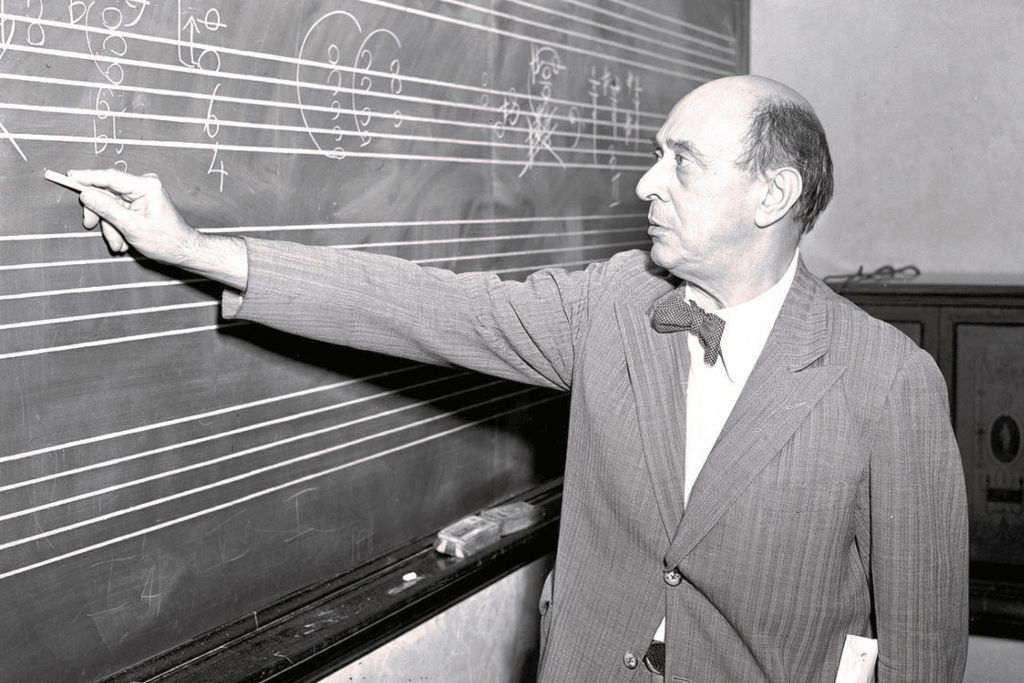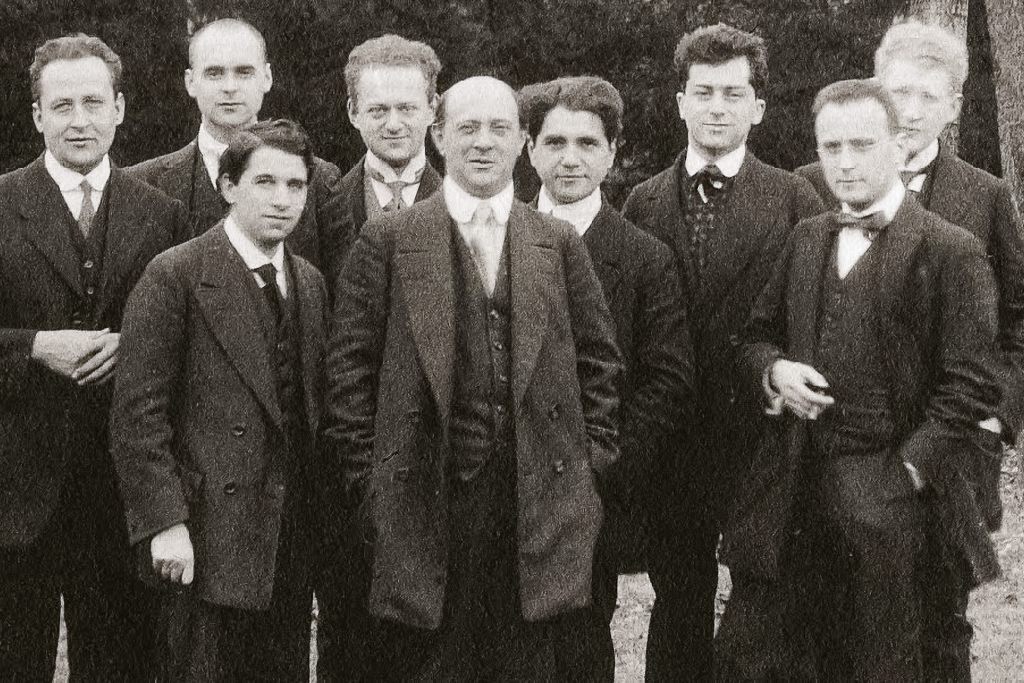“Teaching played an important role my father’s life. He taught his whole life long, not just to make a living but because he truly enjoyed it. It was a challenge for him to pass on to his students his knowledge about and love for the art of the great masters and to analyse their works in all thoroughness. He’d also surprise his students with virtuosically improvised written examples on the blackboard, sometimes joking with his dry humour,” writes Nuria Schönberg-Nono about her father.1

The passion for teaching and getting things across described by Schönberg’s daughter also shines through quite frequently in the composer’s writings and letters. Immediately after assuming his post at New York’s Malkin Conservatory in October of 1933, Schönberg—with his characteristic self-irony—declared the following: “I’ve come here to teach. For teaching is perhaps the only one of my passions that I’ve tried in vain to combat in myself. […] I teach out of passion, and even if I’ve said a thousand times, ‘I’ve taught for nearly forty years, now’, I immediately forget all of my wholesome resolutions and dive into new adventures when a new student comes along.”2 The composer once again took a position on methodological matters where teaching was concerned in one of his final essays, penned in 1950. There, he stated his view that one of the tasks of the teacher was not to march pupils through rigidly fixed systems of composing rules in a stereotypical manner but rather to apply a method of practice-oriented learning-by-doing in the interest of developing individual and flexible potential solutions together with his students—for as Schönberg commented in 1948: “As a teacher, I’ve never taught simply what I knew but instead more what the student needed.”3

Even so, the function of a role model always needed to be upheld: “A true teacher […] must possess the ability to himself do multiple times that which he requires a pupil to do once. […] he must work it [the assigned task—MP] out in the pupil’s presence by improvising several solutions to a problem, thereby demonstrating what is necessary.”4 Schönberg had already propagated this methodology, which abandoned the conventional method of frontal “ex cathedra” teaching “in favour of a search”, in his central pedagogical work—his Harmonielehre (Theory of Harmony) of 1911, which opens with the telling sentence: “This book I have learned from my pupils.” But as much as intuition, associative thinking, and spontaneous improvisation were focal points of his didactics, it was all the more that—on the substantive level—Schönberg placed importance on “structural correctness and what is necessary in the interest of coherence.”5 In practice, this entailed studying the art of composition in light of the artisanal soundness of the “great masters” (embodied especially by Beethoven’s oeuvre). Learning from and with tradition was both a credo and a requirement of this “conservative revolutionary” (Willi Reich). In the 1925 criteria for admission to his Berlin composing class, Schönberg wrote that acceptance would be extended to those who “[…] have thoroughly learned all the tools of the trade (harmony, counterpoint, theory of form, instrumentation) either at a school, privately, or through independent study and are capable of submitting samples of their talent and skill in the form of finished works. […].”6 His focus was hence on conveying general principles and on fundamental technical skills with no stylistic requirements, which is to say: on comprehensibility, logic, coherence, formal function, thematic thinking, and elaborative variation.7 The fact that Schönberg enjoyed near-“guru”-like8 veneration not only due to his exceptional artistic and pedagogical abilities but at least as much by virtue of his personal charisma is attested to not least by the multitude of prominent Schönberg pupils. Schönberg himself speaks of “over a thousand” pupils whom he taught over the course of his long pedagogical career.9 Alongside Alban Berg and Anton Webern, they also included figures such as Hanns Eisler, Erwin Stein, Josef Polnauer, Erwin Ratz, Karl Rankl, Egon Wellesz, Paul Amadeus Pisk, and Eduard Steuermann—and in Los Angeles, even John Cage came for private composing lessons in 1935.
In a 1912 collected volume on Schönberg initiated by Alban Berg, the students paid tribute to their teacher. Erwin Stein, who belonged to Schönberg’s inner circle in Vienna along with Berg and Webern, summed up their praise by placing its essence in a broader, more general context: “Schönberg teaches one to think. He urges his students to look with their own open eyes as if they were the first to observe what can be seen.”10
- Nuria Schönberg-Nono, “Mein Vater, ein leidenschaftlicher Lehrer,” in: Peter Gradenwitz, Arnold Schönberg und seine Meisterschüler, 1998 Vienna, 7.
- Arnold Schönberg, notes for a speech at a reception in New York (in German), October 1933, Arnold Schönberg Center.
- Arnold Schönberg, “Der Segen der Sauce,” in: Anrold Schönberg, Stil und Gedanke, ed. Ivan Vojtech, 1976, Frankfurt am Main, 149.
- Arnold Schönberg, “Der Segen der Sauce,” 446.
- Arnold Schönberg, “Aufgabe des Lehrers”, in: ibid., Stil und Gedanke, ed. Ivan Vojtech, 1976, Frankfurt am Main, 446.
- Quoted in Peter Gradenwitz, Arnold Schönberg und seine Meisterschüler, 1998, Vienna, 27.
- Cf. Reinhard Kapp, “Wiener Schule (zweite)”, in: OEML online.
- Cf. Claus-Steffen Mahnkopf, “Schönberg als Lehrer,” in: Musik-Konzepte 117/118. Arnold Schönbergs ‚Berliner Schule‘, 2002, Munich.
- Arnold Schönberg, “Aufgabe des Lehrers”, 446.
- Arnold Schönberg. Mit Beiträgen von Alban Berg et al., 1912, Munich, Arnold Schönberg Center.

